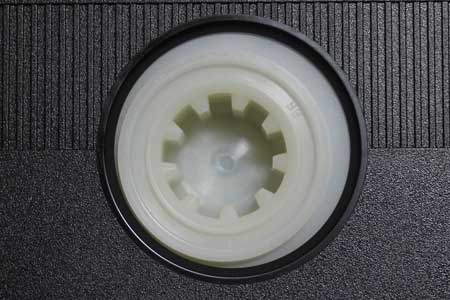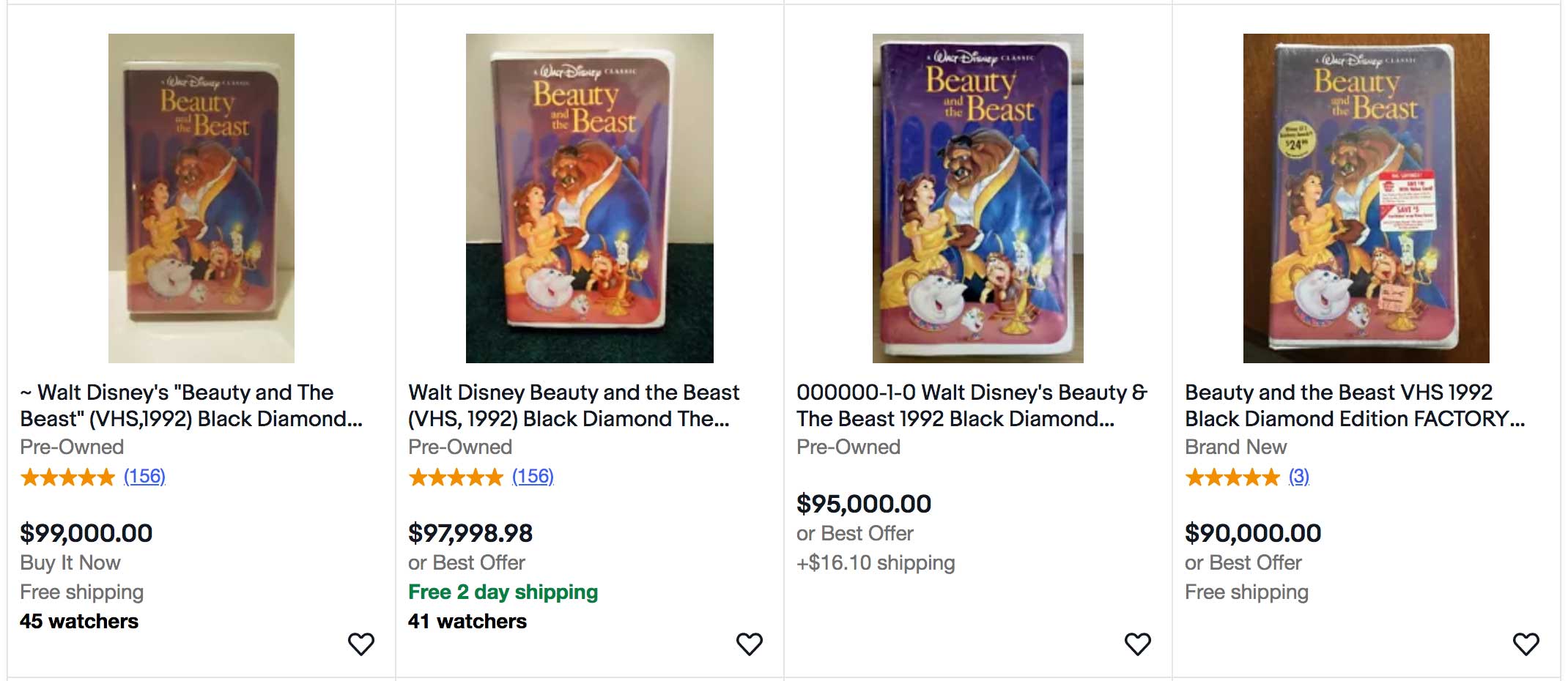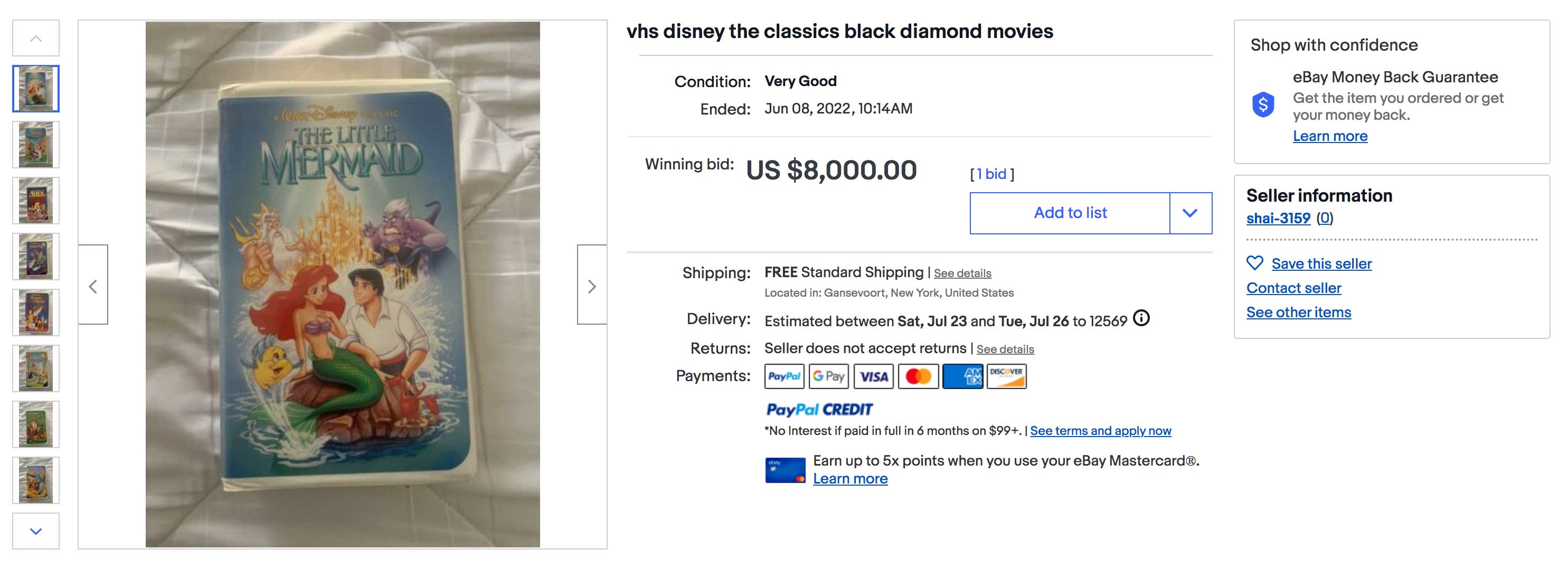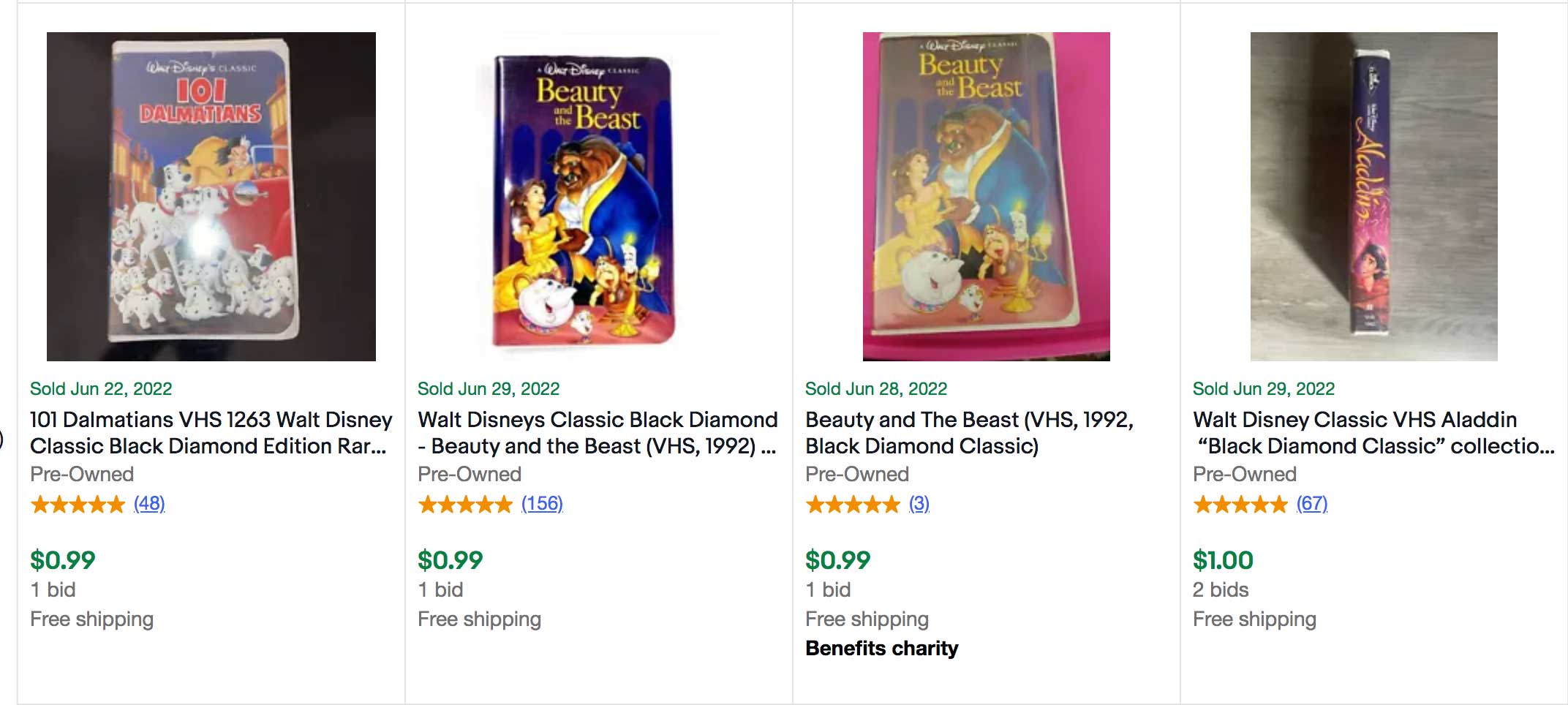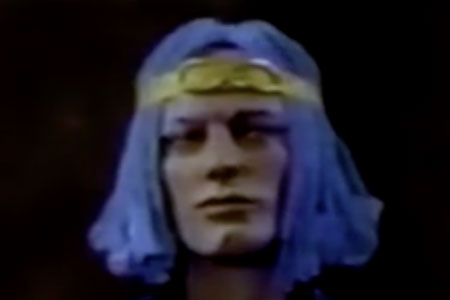 If you watch enough episodes of Pawn Stars or Antiques Roadshow, you may start to dream about finding something in your attic that’s worth a million bucks. And that’s a lovely thought to have; despite what anyone says, money can definitely buy at least some happiness. How much would you pay to avoid being dehumanized by your shit-shoveling job every day, where you’re nothing but a meat cog being ground to a nub by the machinery of unfeeling algorithms? Probs a lot. Scientifically, that Star Trek pinball machine you want is roughly equivalent to a lifetime of happiness, or maybe just being able to pay your rent without selling personal body fluids would be pretty neat.
If you watch enough episodes of Pawn Stars or Antiques Roadshow, you may start to dream about finding something in your attic that’s worth a million bucks. And that’s a lovely thought to have; despite what anyone says, money can definitely buy at least some happiness. How much would you pay to avoid being dehumanized by your shit-shoveling job every day, where you’re nothing but a meat cog being ground to a nub by the machinery of unfeeling algorithms? Probs a lot. Scientifically, that Star Trek pinball machine you want is roughly equivalent to a lifetime of happiness, or maybe just being able to pay your rent without selling personal body fluids would be pretty neat.
But the hard truth about collectibles, and please take this to heart, is that most of them aren’t worth anything at all. Experienced record collectors already employ a few rules which can easily apply to a lot of different worlds of collecting.
– 99.5% of the records that you find at Goodwills and book sales will be worth less than a buck.
– There’s a far greater chance of a record being worth something if it’s obscure than if it’s familiar.
Of course, there are caveats; some of the most musically rewarding experiences can be found for a buck, and early presses of famous albums are often worth money – but it’s very rare that you’ll actually stumble across a low-numbered copy of The White Album. If you see a copy of The White Album, it’s probably worth five bucks.
Collecting is a complex field, and while the general principles are the same across every kind of collecting, there are differences to be aware of whether you collect trading cards, model trains, action figures, and most recently, VHS tapes.
Let’s get this out of the way first : your “Black Diamond” Disney VHS tapes aren’t worth anything. Most articles, like this pathetic joke written by Money Inc., don’t have a clue about valuations of simple items, so they perpetuate the destructive Black Diamond Myth, which started over a decade ago in a similar clickbait list written by another fumbling moron. The truth is that you’ll find a dozen Black Diamond tapes at any Goodwill, they’re worth less than a dollar, millions of them were made, and they’re not rare in any way. So, how does the myth perpetuate?
One reason is that Internet “writing” is largely unoriginal; there’s a real lack of interest in original research when you can just regurgitate someone else’s already-regurgitated article, based on a string of ten other articles that were not vetted. Most of what you read online is just the middle part of whatever it is that a human centipede produces. If someone says one dumb thing once, lazy, greedy dummies will spread it; it’s the sad, sad truth of Web 2.0 and the low bar of entry into spreading misinformation of all levels. Twenty years ago, you had to know some HTML to get your ideas out there; today, all you need is an internet connection and a vague idea of how words are strung together.
If a writer decides to do some superficial research into this Black Diamond thing, they’ll probably go to eBay and type in ‘Black Diamond VHS’, and get some really confusing results – and most casual SEO spammers don’t know how eBay actually works. There’ll be a lot of active listings at insane prices, mostly created by amateur sellers who have seen one of these terrible articles and just ran with it. You’ll even find many VHS which have “sold” at that price, but that’s also a pretty common type of price fixing scam that’ll come up again later; in essence, it’s often two related parties buying and selling from one another to create a false “documented” price for an item, thus adding some credibility to the idea that said item is worth something when it comes up for sale again. Sometimes, people bid these items up to very high prices and just don’t pay – sometimes as a goof, and sometimes intentionally to create the aforementioned price inflation. And since eBay doesn’t display when an auction has not been paid for, or the amount of the Best Offer accepted, it results in a collection of data that’s harder to interpret if you don’t know the guts of the increasingly antiquated auction system. Look at any of the accounts involved in these weird numbers, and you’ll find one that has very little feedback or is very new. That’s the shill. They’re not real, nor is anything you’re seeing in this auction.
The Black Diamond Myth won’t die, mostly because of the low-effort nature of internet content and it’s lack of critical thinking. It’s gross. Most importantly, ask yourself which is more realistic : a common VHS being worth $8k, or just a buck because there are 15 of them at the thrift store right now, and hundreds more for a buck or less on eBay?
So while this myth is one that just won’t die, it’s new myths that are becoming even more dangerous for the hobby of VHS collecting.
For that, we have to look at the recent revelations about video game grading scams. Karl Jobst can describe this in far better detail than I ever could.
In essence, a video game grading company and an auction company (allegedly) worked in tandem to cross-promote in a way that was deeply dishonest.
– Grading company grades a pretty normal game at an unusually high grade, making news.
– Auction company then “sells” that game for an unusually high price, making more news.
– But the game was “sold” to someone involved in the grading company who may or may not have already owned that exact game.
The effect of this totally staged exchange is twofold : more people want to grade their games in the hope that they’d make a lot of money, and more people want to buy games, now seeing classic gaming as an investment. The result is that the usual pool of games dries up as interest is driven up, at least partially because of the illusion created by this scam.
It also can’t be denied that this all comes at the tail end of a ten-year explosion of video game prices, as people organically returned to retro systems out of nostalgia and disenchantment with modern video games… but never missing a greasy dollar, the companies that normally grade comics and trading cards latched onto the soft throat of the gentle Nintendo game collector and decided to suck it dry. And despite what one might think, these graded copies aren’t just their own little universe of high-end collecting for the wealthy; the main argument from some collectors is that this weird little circle of graded game collectors doesn’t intersect with casual collectors, but that’s wrong.
This shift in collecting classic games has priced out casual collectors who are generally just trying to have fun, play some games from when they were kids, and feel a little bit of nostalgia. Instead, collecting classic games has become an investor’s game.
There are a few examples I like to use when trying to explain how collecting graded games effects casual collectors, many of whom think they’re safe and somehow insulated from the hot little hands of “collectible investors”, which is the newest way that the wealthy are trying to destroy and monetize the hobbies of the middle class against them.
The most common argument is that while graded copies go up in price, loose games have stayed the same, but that’s demonstrably false. Take Cowboy Kid for example; in 2012, I bought a loose copy for about $30; it was considered an uncommon NES game; maybe a 7 out of 10 on the rarity scale. Not the rarest by far, but one to pick up if you found it at a good price. Today, that game is worth $500. You can see a price chart below; the second chart indicates recorded values for graded copies. While this isn’t specific to the grade itself, for which the values will vary wildly, the sharp spike in 2021 for any grade is a pretty clear indication of something weird going on. You can’t even have these two lines on the same graph, since the Graded line is so dramatic.


The other argument for grading is that common things will still be available and cheap, and rare stuff was always for the higher-end market anyhow, but that doesn’t hold true when you look at the available information. Take Super Mario Bros. 3, for example. As people began to seek out gradable copies around 2020, when the grading “news” about ultra-valuable games was getting another push with another not-altogether-honest auction, it doubled in price from $10 to about $20. And Spot, one of the worst games for the NES with barely any replay value, went form a $1 to $10 in the course of the last ten years.
Yes, collectible values are expected to increase, but as the video above argues, it’s happening at an unusual, suspicious rate. And now, these companies are focusing on VHS tapes.
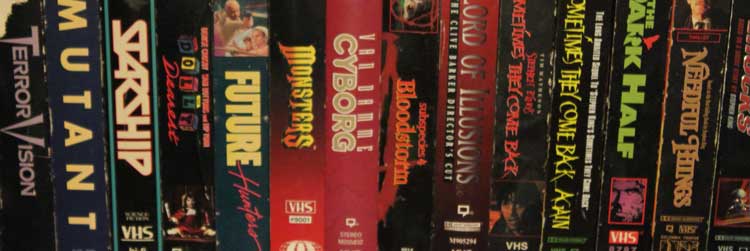
For some, this is a boon; they have a lot of VHS tapes that they want to get rid of, and they can now sometimes sell them at goofy prices to goobers who want to invest in them like NFTs – because that’s going so well.
What I’m not going to do is link to any of the articles that have touted the idea that old tapes are worth a million bucks; it would only improve their SEO, but places like Fortune and the NY Post have all published articles about VHS investing, since a few graded VHS tapes just “sold” for a large amount of money – coincidentally, at exactly the same time that these grading companies announced that they were beginning to grade VHS tapes. You couldn’t ask for a better promotional coincidence, right?
If you don’t see something suspicious about this, you’re not paying attention. It’s video games all over again. But it’s also really problematic on a fundamental physical level; the magnetic medium of tape is pretty flimsy, all things considered. And these aren’t being graded on functionality; nobody is watching a tape to see if it still plays, and in cases of sealed tapes, nobody is checking the interior for the dreaded “tape mold”, which is a pain to clean (and impossible to clean on sealed items). It’s why you don’t see audio cassettes being graded… at least until these gross companies get their hands on those, too. For these, grading is glaringly cosmetic and superficial; that may be fine for a sealed video game that generally doesn’t decay internally, but not so much for magnetic tape.
That ridiculous oversight aside, the pattern of millionaires leveraging a subculture for profit is repeating. Fortunately, a majority of VHS collectors are smart enough to be cynical about VHS grading, but as news spreads about graded copies of tapes grows, the community also grows. That in itself is fine; no need to gatekeep, and the more people going through their closets to share their cool, old stuff, the better; but if you browse any Facebook group that trades in VHS now, you’ll see new members dropping in with giant price tags on their $1 standard copy of E.T., previously destined for the trash until they saw an article on Newsweek about how your old whatevers might be their ticket out of this hellhole. All thanks to the desperate need to produce articles, and two incestuous companies who have constructed their own fiction, knowing that the average person wouldn’t know the difference.
Don’t buy into it. VHS grading is a scam.
========
If you’re interested in cool VHS finds, please follow Far Out VHS on Instagram.
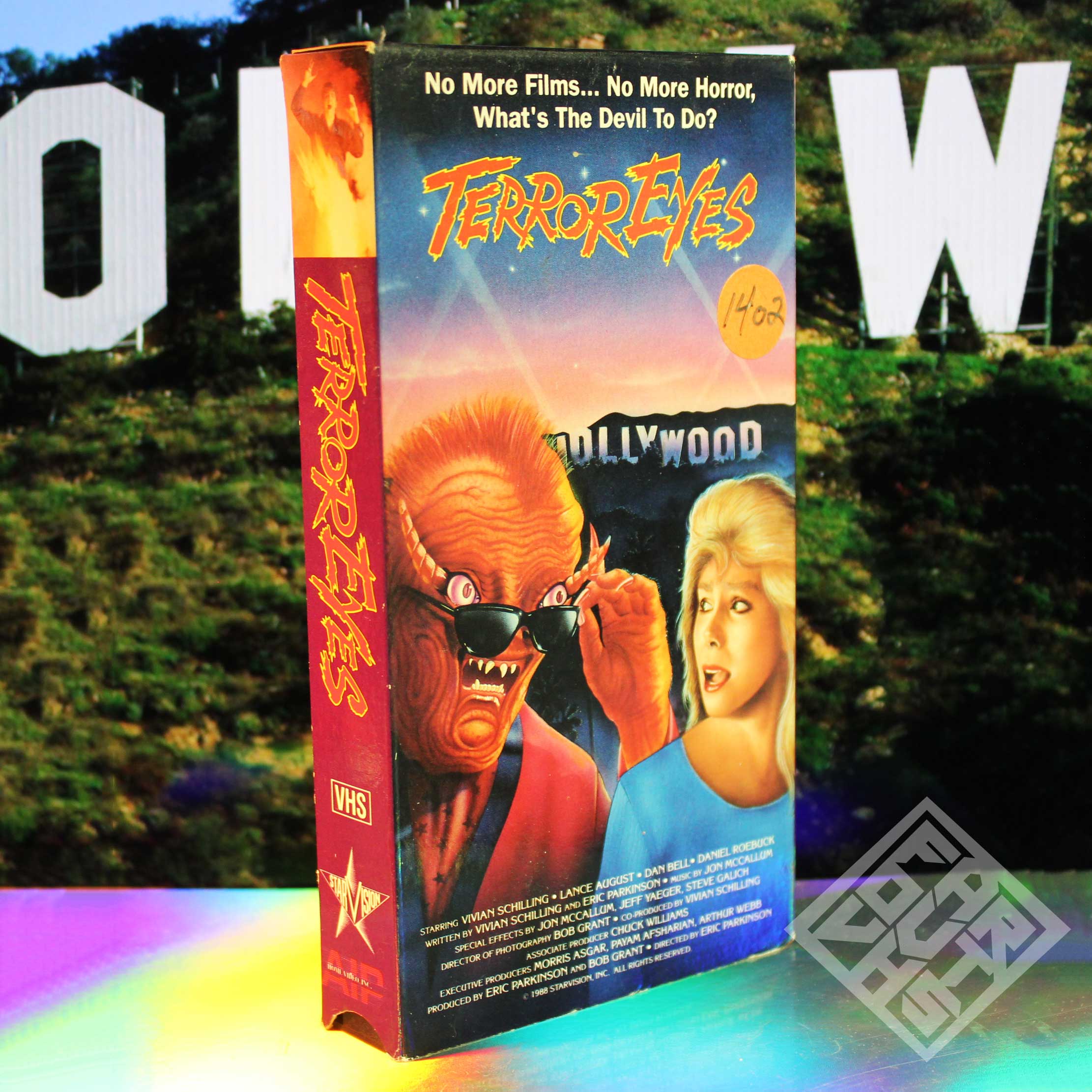
 C. David is a writer and artist living in the Hudson Valley, NY. He loves pinball, Wazmo Nariz, Rem Lezar, MODOK, pogs, Ultra Monsters, 80s horror, and is secretly very enthusiastic about everything else not listed here.
C. David is a writer and artist living in the Hudson Valley, NY. He loves pinball, Wazmo Nariz, Rem Lezar, MODOK, pogs, Ultra Monsters, 80s horror, and is secretly very enthusiastic about everything else not listed here.
